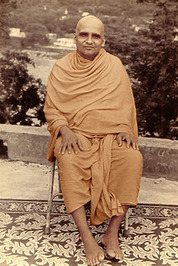All things exist. We cannot conceive of non-existence as different from existence, for even non-existence, in order that it may convey any sense, must become a content of consciousness. And consciousness must be.
Existence is the minimum to which things can be reduced, without which even thought is impossible. Everything relates to existence of some kind, and there is no thought of non-existence. To argue along the lines of Parmenides, existence is that which does not admit of any change. We cannot think what is not, for what is not cannot come into being, either from what is or from what is not.
If what is comes from what is, we would be stating something which we ourselves do not understand, for what is includes all things, and there is no such thing as the production of what is from what is. What is, again, cannot come from what is not, for what is not has no meaningful value. To posit the relation of what is to what is by way of causation involves a tautology, and to conceive of the coming into being of what is from what is not, is absurd.
There cannot be something other than what is, for what is, is the all. Even supposing that there is such a thing as the coming into being of one thing from another thing, we would have to admit that nothing other than what is can come into being, for we cannot add anything to what is, and anything added must itself be a part of what is.
There cannot be anything exceeding what is, and what is not, again, cannot come into being. That which is cannot increase, and cannot also decrease, for it is always. If something is to be removed from what is, so that the latter may be lessened, what is removed should be either what is or what is not. What is cannot be removed from what is, and what is not cannot, again, be removed from what is, for it means nothing at all.
The concept of dimension, again, is possible only when there is spatial separation of one thing from another. But even space is included in what is. So what is cannot be diminished in any way. And it cannot be increased, because we cannot add anything to it other than itself.
Existence is the whole reality. It does not admit of either addition or subtraction, production or change of any kind. In order that it may move or change, there should be space; but space is not outside it. True being has no origination, no change, and so no end. This being must be equally present everywhere, with no less or more of it anywhere. It is that which is.
As being is indivisible, it cannot conceive of a real distinction of things in it. All things are being. If there are things other than being, they must be non-being. Even becoming has meaning only when it has being. If being is to be divided, we may have to introduce some other distinguishable and distinguishing element in it, which would be nothing but non-being.
Being is reality.
from The Philosophy of Life by Swami Krishnananda, The Divine Life Society.

 Narada climbs up the staircase from Name up to Spirit almost hopping and jumping spurred by his own enthusiasm and curiosity. He asks his venerable teacher at each step after meditating, “What’s next?” He, however, falls absolutely silent after meditation at the level of Spirit, the 15th itself. He has another flight of steps to take to reach the Ultimate, the Absolute!
Narada climbs up the staircase from Name up to Spirit almost hopping and jumping spurred by his own enthusiasm and curiosity. He asks his venerable teacher at each step after meditating, “What’s next?” He, however, falls absolutely silent after meditation at the level of Spirit, the 15th itself. He has another flight of steps to take to reach the Ultimate, the Absolute!